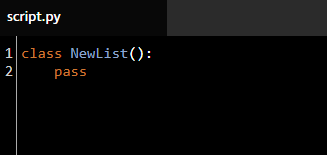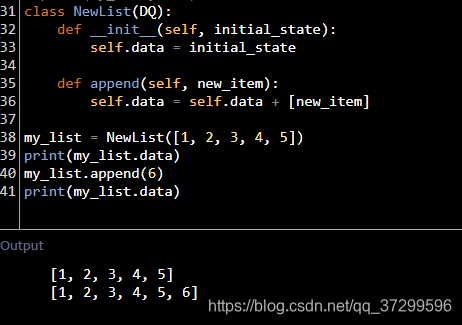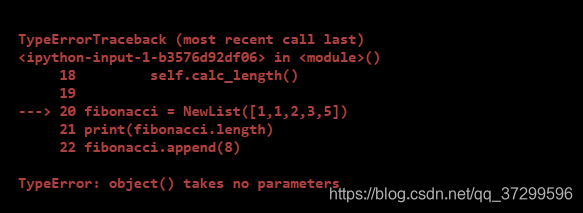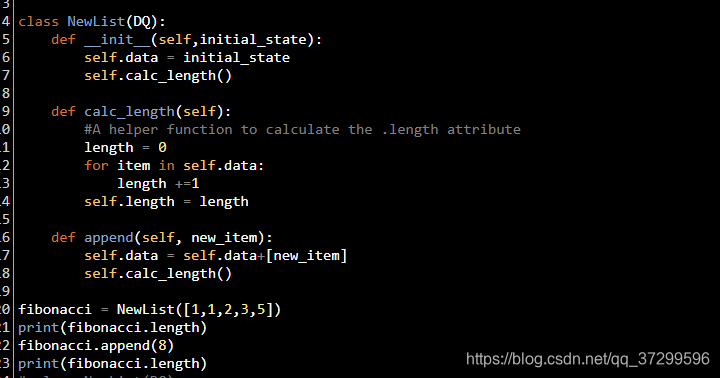1.define an empty class
use pass to avoid error, python doesn’t let us define classes or functions when they are empty

2. 类中函数的第一个参数总是对象本身,写作self

3. attributes
The power of objects is in their ability to store data,and the data is stored inside objects using attributes. You can think of attributes like special variables that belongs to a particular class. When we instantiate an object, most of the time we specify the data that we want to store inside that object.

4. example
1. make sure you use self.data, otherwise you are not creating an attribute, you’re just assigning to a variable. To access our attribute from within the method, we need to use self.data
make sure you use self.data, otherwise you are not creating an attribute, you’re just assigning to a variable. To access our attribute from within the method, we need to use self.data
2.以下例子出现报错: object() takes no parameters找了很久的错误结果发现初始化函数必须是左右两条下划线**init**






 本文深入探讨Python中类的定义方法,包括空类的创建、类中函数使用self参数的原因,以及对象属性的存储与访问方式。通过具体示例,讲解如何避免常见错误,如在初始化函数中正确使用self及属性赋值。
本文深入探讨Python中类的定义方法,包括空类的创建、类中函数使用self参数的原因,以及对象属性的存储与访问方式。通过具体示例,讲解如何避免常见错误,如在初始化函数中正确使用self及属性赋值。
















 410
410

 被折叠的 条评论
为什么被折叠?
被折叠的 条评论
为什么被折叠?








